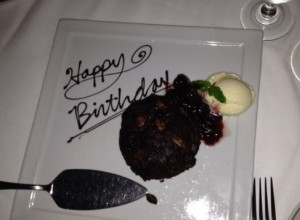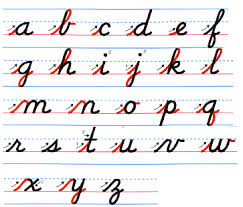No more cursive writing? Is keyboarding taking over?
The other day I was unashamedly eavesdropping when two very animated grandmotherly types were talking about their grandchildren and changes in the school curriculum. The topic of interest was the fact that the grandkids’ schools had dropped cursive handwriting instruction. Apparently the justification for this exclusion was the school systems’ collective wisdom that today’s kids need keyboarding instruction and not archaic handwriting skills. Undoubtedly the thoughts were that the 10-15 minutes per day, or 45-60 minutes per week, devoted to handwriting could be better spent learning more trivial factoids to be regurgitated back on some test of baseline knowledge. After all, really, what does anyone learn from handwriting?
Many moons ago handwriting skills, or lack thereof, distinguished the “learned and educated” from the” ignorant and unschooled.” Educational levels, as well as social status, were often displayed in the fineness of one’s penmanship. Folks took great pride in their abilities to artfully wield a pen with speed, flourish, and flair. What would our Founding Fathers have been without the ability to write beautifully? Today, with computerized everything, a fine hand can be replicated by a simple, programmable, microchip. So if the end effects are the same, then why get upset at the exclusion of cursive writing? Here are a few things to consider.
With the exclusion of cursive handwriting that means today’s generation will not be able to readily decipher historic documents.
Pubescent teens will not endlessly practice the acquisition of a distinctively styled signature – thus denying themselves a form of self-definition. Don’t we all remember between the ages of 10-15 fashioning just the right look for our adult signature. Playing with slant and form and letters below the line and dotting our i s in different ways. We looked for something to accurately project who we were or who we wished to become. Many females carried this rite over into their transition of marriage as the old signature morphed into the new married version thus solidifying a new identity and the joining. Is that transition to be gone also – sacrificed to the altar of effective keyboarding?
What else might be neglected now that handwriting is a no-no?

Check out the scribbled message on this plate – (Despite the appearance in the phone pix, it was actually delicious chocolate bread pudding with cherries jubilee and ice cream.) Somehow I doubt if there is a computer yet that has been programmed to write in chocolate or raspberry syrup across plates. Would this surprise dessert have looked quite as elegant with the missive printed by an unsteady hand? I doubt it. Will tomorrow’s chefs need to have classes in remedial handwriting now that cursive instruction has been disappeared? Or perhaps what might be worse, upon receiving an artful culinary message being unable to read it and be forced to say to the server, “Sorry, but I don’t read cursive!” How sad, a new form of illiteracy. The additional shortfalls with the absence of cursive might be –
- No more autographed pictures or autograph seekers or inscribed books
- No more hastily scribbled notes. No one will be able to read them anyway.
- No more undecipherable prescriptions. What will pharmacists and nurses have to complain about?
- No more graphology experts profiling criminals by the slant of the writing, or lawyers analyzing bogus signatures on wills. Anyone ever looked at the characteristics of Hitler’s aberrant signature? Shivers.
On a more serious note there is something to be said about practicing spelling words. There is an eye-mind-hand connection that creates indelible memories, connects dendrites and neural memory pathways. Somehow typing one’s spelling words or notes doesn’t seem to have the same long-term effects on memory as repeatedly writing them in longhand . Oh, I forgot, silly me, spelling is almost obsolete too.
Perhaps the greatest loss to me personally is the thought that this generation will not leave behind scrawled memories for others to touch, nor will many of them be able to read those that were left behind. For me there is great connection and emotional value in seeing the distinctive evidence from those I loved and lost. Husbands, wives, mothers, fathers, grandparents, aunties, uncles, cousins, friends, lost loves — they leave distinctive parts of who they were in the scrawled bits and pieces of their lives — strong evidence of existence left behind for us to find and remember. They are silent hugs from the past, conduits to memories shared, and often they evoke joy, sorrow, regret, but always the deeply embedded emotional strings into our different paths.
There is that moment when I pick up a stained and much used recipe card that I am transported back to my mother’s kitchen baking cookies on a cold winter’s afternoon. There are the cards, and warm wishes of pride, affection and familial love that I need to hear again in moments of sorrow or despair. All of this is part of their distinctive hand, the scrawled Xes and Os that pry open a heart full of memories. The thought that all of this will be denied today’s generation is for me a very big mistake.
For those of you who want your children to continue to know how to write and read cursive handwriting, the D’Nealian Alphabet was designed by Donald Thurber in the late ‘70s to provide children with an easy transition from manuscript printing into cursive form. It is a good one to practice. Teach it to your kids so they have half a chance at being able to write and read the cursive hand. I am also happy to report that where schools are failing, YouTube seems to have picked up the slack. (That my friends is a very damning and sad statement. While I love YouTube, parenting via this medium gives me the shivers!) Those kids who want to be fully literate, who want to be able to read both culinary scribbles on their dessert plates, and valued older documents, as well as write notes quickly, there are appearing lots of instructional how-to videos to fill the void

Thank heavens for that. Here’s to an underground cursive movement — rock on!!!
